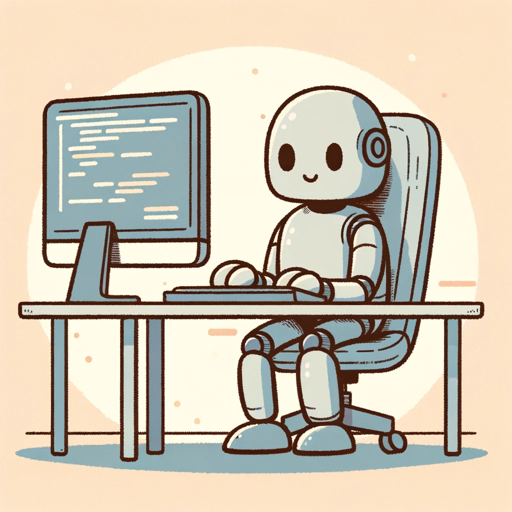GPT GPT-custom GPT creation
Create Custom GPTs Easily with AI
Related Tools
Load More
GPTs Finder
Search OpenAI for specific GPTs

GPT Builder Builder
Your guide to creative GPT building.

GPT Finder
Find best GPTs for your specific purposes, intelligently browse the web of 20000+ GPTs

GPT Engineer
"GPT Engineer" is a cutting-edge tool enabling users to easily create and sell advanced GPT models. Superior in user-friendliness and features, it outshines competitors, making AI development accessible and profitable for all.

DevOps GPT
DevOps tips, examples, and quiz Q&A

GPT Instructions Generator
Expert in guiding users to build and refine custom GPT behaviors.
20.0 / 5 (200 votes)
Introduction to GPT GPT
GPT GPT is a specialized assistant designed to help users create custom GPTs by guiding them through a structured and incremental process. The purpose of GPT GPT is to simplify the conceptualization, development, and refinement of custom GPT models, ensuring they are tailored to specific needs and requirements. For example, if a user wants to create a GPT for managing customer service interactions, GPT GPT will help define the desired behaviors, functions, and boundaries of the model, resulting in a highly effective and purpose-driven GPT.

Main Functions of GPT GPT
Conceptual Guidance
Example
Assisting users in brainstorming and defining the purpose and scope of their custom GPT.
Scenario
A user wants to create a GPT for automating HR queries. GPT GPT will ask targeted questions to understand the user's needs and provide guidance on defining the GPT's scope and objectives.
Incremental Development
Example
Breaking down the development process into manageable steps and providing specific instructions at each stage.
Scenario
A user is developing a GPT for e-commerce recommendations. GPT GPT helps by outlining the steps, from initial concept to final deployment, ensuring each stage is thoroughly addressed.
Specification Refinement
Example
Reviewing and refining the GPT instructions to ensure clarity, functionality, and alignment with the user's goals.
Scenario
A user has drafted a specification for a legal advice GPT. GPT GPT evaluates the spec, suggests improvements, and helps iterate until the specification is robust and clear.
Ideal Users of GPT GPT Services
Developers and Programmers
These users benefit from GPT GPT's structured approach to creating custom GPT models, ensuring they can develop highly specific and effective GPTs without missing critical details.
Businesses and Organizations
Companies looking to automate and optimize various processes can use GPT GPT to develop tailored solutions, improving efficiency and productivity in areas like customer service, HR, and marketing.

How to Use GPT GPT
Step 1
Visit aichatonline.org for a free trial without login, also no need for ChatGPT Plus.
Step 2
Conceptualize your idea for a custom GPT. Determine the specific functionality and objectives you want your GPT to achieve.
Step 3
Engage with GPT GPT to refine your idea by answering targeted questions that help narrow down the exact desired and undesired behaviors of the GPT.
Step 4
Iteratively develop the GPT Instructions specification using the double-diamond design process. Expand and then refine your ideas until you have a clear and detailed specification.
Step 5
Review and finalize the GPT specification, ensuring it is clear and aligns with your goals. Use the GPT GPT to revise and enhance the specification if needed.
Try other advanced and practical GPTs
Musho Logo
AI-powered minimal logo design tool.

GCP Assistant
AI-powered Google Cloud support

Research-Paper Analyzer
AI-powered research paper analysis.

Photo to Manga Transformer
Transform real photos into anime with AI

ArtPrompt Master
AI-powered prompt optimization for DALL-E.

ClarityClips
AI-powered summaries from YouTube videos.

Python Developer
AI-powered Python development assistant

HR Profile Analyst: Am I a fit for this role?
AI-Powered Profile Matching for Recruiters

IELTS General Practice: Writing
AI-powered IELTS Writing Tutor

Software Crafter
AI-powered Test-Driven Development for Everyone

Clinical Trial Navigator
AI-powered navigator for clinical trials

DesignBuddy
AI-powered insights for better designs

- Research
- Education
- Entertainment
- Writing
- Customer Service
Detailed Q&A About GPT GPT
What is GPT GPT?
GPT GPT is a specialized assistant designed to help users conceptualize, develop, and refine custom GPTs by guiding them through a structured and iterative process.
How can GPT GPT help in developing a custom GPT?
GPT GPT assists by asking targeted questions to understand your needs, refining your ideas, and helping you create a detailed specification for your custom GPT, ensuring it meets your specific requirements.
What are common use cases for GPT GPT?
Common use cases include developing chatbots for customer service, creating educational tools, building AI-powered content generators, designing specialized research assistants, and more.
Do I need technical expertise to use GPT GPT?
No, GPT GPT is designed to be user-friendly and does not require technical expertise. It guides you through the process with clear and simple instructions.
Can GPT GPT help improve an existing GPT?
Yes, GPT GPT can help refine and enhance existing GPTs by reviewing the current functionality and providing suggestions for improvements and optimizations.